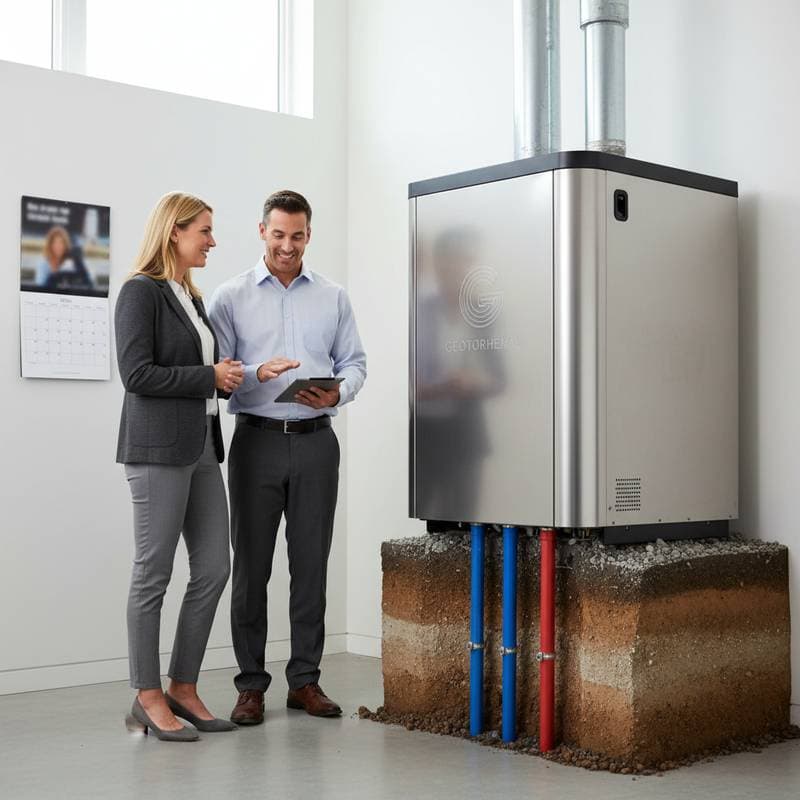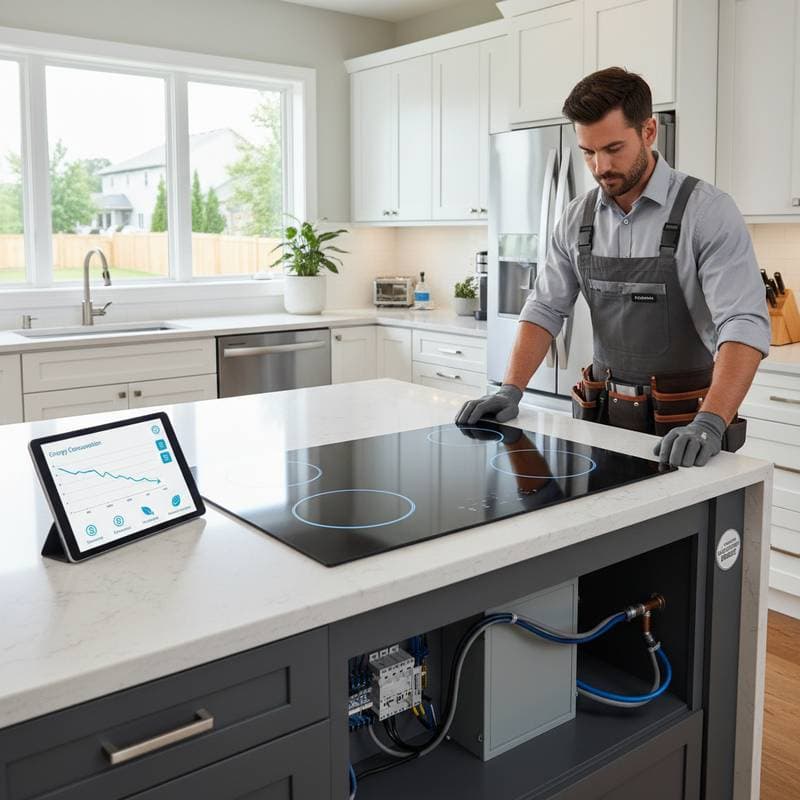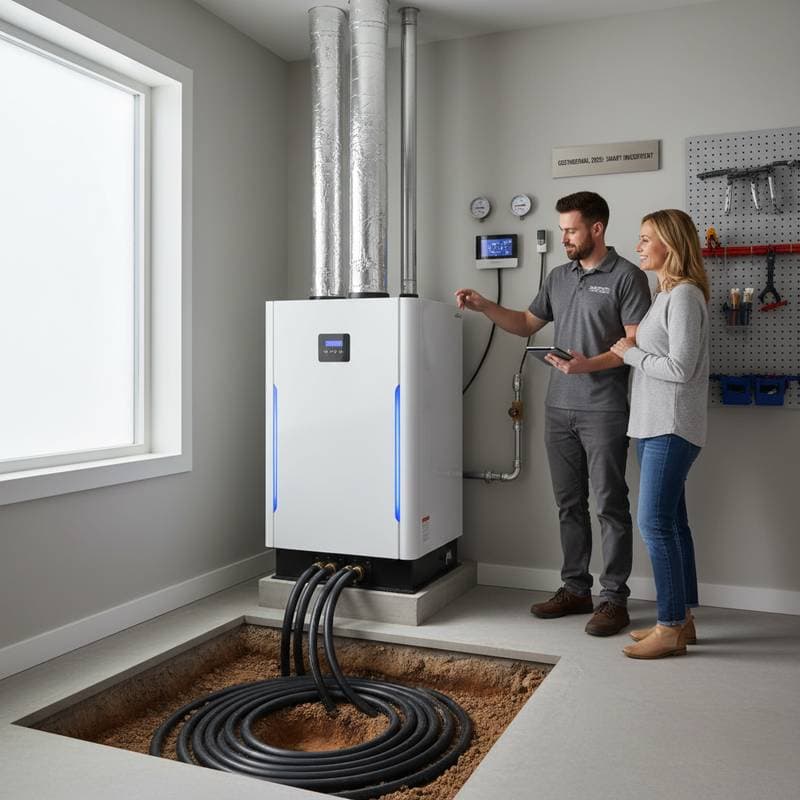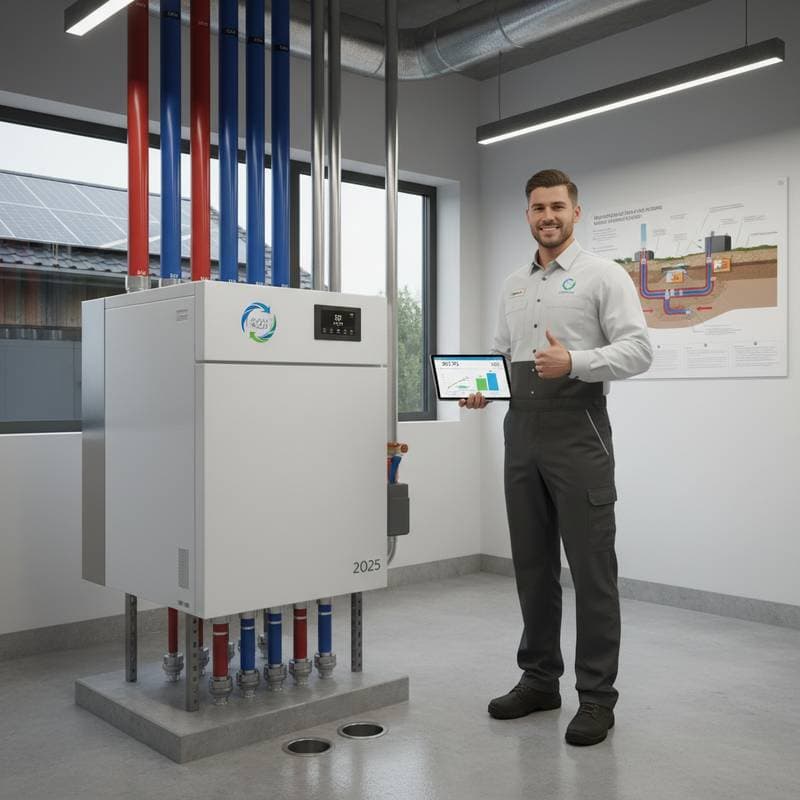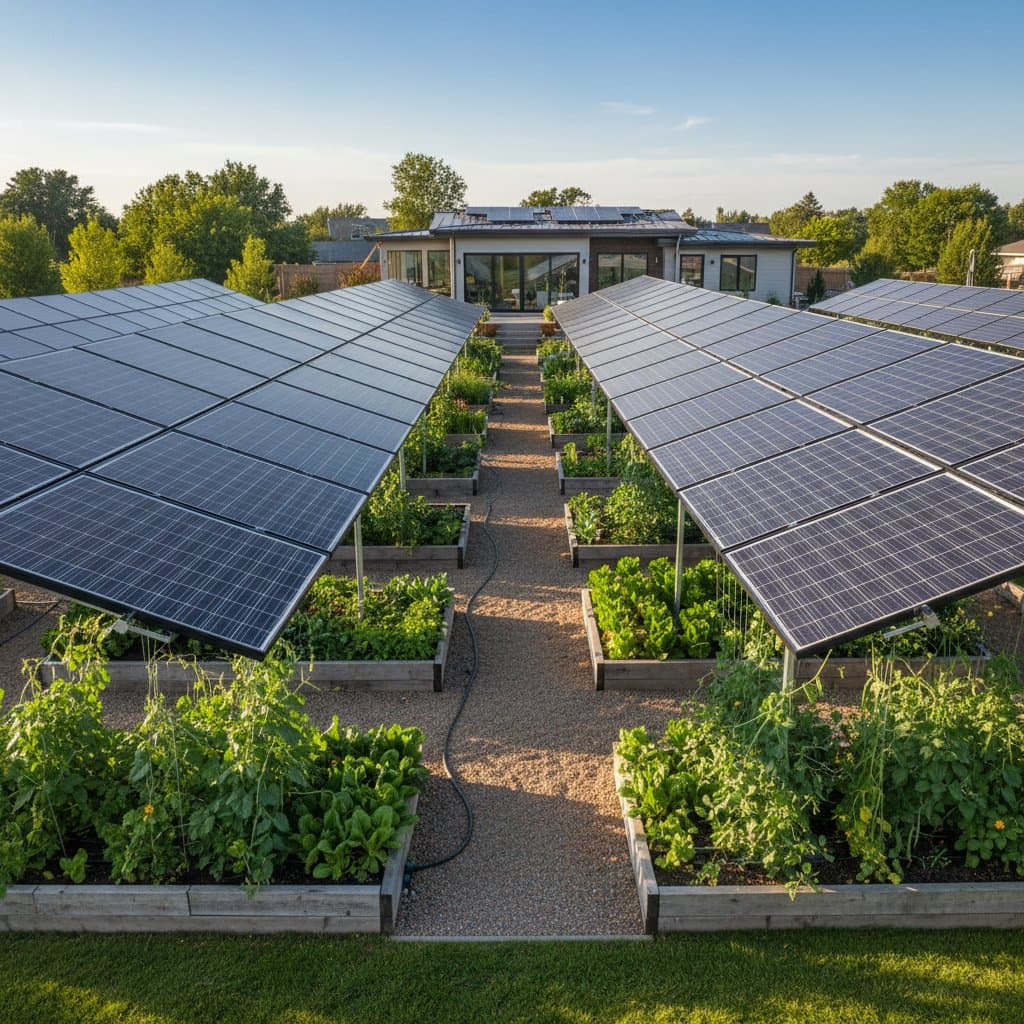Key Points
- Geothermal HVAC systems reduce annual heating and cooling expenses by up to 70 percent relative to traditional systems.
- Recent federal tax credits substantially decrease initial installation costs, broadening access for residential applications.
- These systems offer enduring financial benefits alongside enhanced property appreciation and reduced environmental impact through careful implementation and financing strategies.
The Untapped Energy in Your Backyard
Picture the ground under your property as a reliable source of thermal energy, capable of maintaining comfortable indoor temperatures year-round. This consistent earth temperature, which sustains plant life and root systems, also provides a stable foundation for efficient home climate control. Historically, the primary obstacle for homeowners has been the elevated initial investment required for geothermal systems, despite their superior performance. Current federal tax credits alter this dynamic, converting geothermal HVAC into a practical and economically viable choice.
For individuals considering home renovations or new builds, these incentives facilitate access to cutting-edge, eco-friendly heating and cooling solutions. The financial projections are persuasive, yet a thorough grasp of the mechanisms involved proves essential to capitalize on this timely benefit.
Financial and Environmental Advantages of Geothermal Systems
Geothermal HVAC operates by leveraging the earth's steady subsurface temperatures via a ground-source heat pump. The system employs underground loops containing a heat-transfer fluid to exchange thermal energy with the home. In winter, it extracts heat from the ground and delivers it indoors. In summer, it transfers excess indoor heat back into the earth.
This process achieves efficiencies ranging from 300 to 500 percent, producing three to five units of heating or cooling for each unit of electricity used. In contrast, standard furnaces and air conditioners operate at 80 to 95 percent efficiency. Such disparities translate to noticeable reductions in monthly utility expenses.
On the environmental front, geothermal systems minimize carbon footprints by drawing on the earth's renewable heat reserves rather than fossil fuels. Numerous configurations also supply hot water for household use, obviating the need for additional appliances. These features collectively diminish energy consumption, elevate indoor living standards, and promote sustained ecological responsibility.
Navigating the Latest Federal Tax Credits
Recent federal incentives enable homeowners to offset a significant share of geothermal heat pump installation expenses. Eligibility extends to systems that satisfy established efficiency benchmarks, covering costs for equipment, labor, and preparatory work.
Consider a residential setup priced at $20,000 to $40,000; eligible credits might return $5,200 to $12,000 based on 26 to 30 percent of the total. Layering in state or local rebates can align the net cost with that of advanced air-source alternatives or efficient furnace-air conditioner combinations.
This affordability expansion democratizes geothermal technology, integrating it into standard budgets for renovations and constructions, particularly for owners anticipating extended residency.
Installation Cost and Return Overview
- Standard Residential Cost: $20,000 to $40,000
- Federal Credit Amount: 26 to 30 percent of qualified expenses
- Yearly Energy Reductions: 40 to 70 percent on heating and cooling
- Typical Recovery Time: 5 to 10 years, influenced by regional rates and consumption patterns
- Durability Expectations: 25 years for the heat pump unit; 50+ years for ground loops
These estimates fluctuate with specific installations, but they illustrate the amplified value from tax incentives. Post-credit reductions in upfront outlay allow persistent savings to accumulate over time.
Essential Planning and Expert Design Considerations
Geothermal projects demand tailored engineering to align with site-specific factors like soil composition, lot dimensions, and energy demands. Loop configurations vary between vertical drilling for compact spaces and horizontal trenching for larger areas, guided by geological assessments. Expert evaluations safeguard optimal function while preserving yard aesthetics and structural integrity.
Experienced professionals conduct precise load analyses to determine appropriate system sizing. They confirm compatibility with existing ducts, insulation levels, and electrical infrastructure. To secure tax benefits, request certification that the setup adheres to mandated efficiency thresholds.
Pre-Installation Checklist
- Conduct Site Assessment: Examine soil properties, land availability, and equipment access routes.
- Perform Energy Analysis: Calculate precise heating and cooling requirements for accurate sizing.
- Evaluate Funding Options: Investigate tax credits, available rebates, and energy-focused loans.
- Develop System Layout: Select vertical, horizontal, or water-based loop types.
- Engage Certified Installers: Choose specialists familiar with local climate conditions.
These measures ensure dependable performance and maximize financial returns.
Geothermal Versus Traditional HVAC Options
Geothermal excels in efficiency and longevity when compared to standard systems. Air-source heat pumps falter in severe winters due to fluctuating outdoor air, whereas geothermal maintains steady efficiency through constant ground warmth. Gas furnaces provide quick heating bursts, yet they incur variable fuel expenses and escalating upkeep.
Evaluating total ownership costs reveals geothermal's edge. Although initial pricing may exceed alternatives, tax relief, lower operational expenses, and reduced servicing culminate in greater net worth.
Key Superiorities to Standard Systems
- Reduced Running Expenses: Ongoing utility bill decreases.
- Uniform Climate Control: Reliable temperature and humidity regulation.
- Discreet Functionality: No external units mean less noise.
- Extended Service Life: Underground elements endure beyond several conventional replacements.
- Property Value Boost: Efficient features command premium sale prices.
Enhancing Health, Comfort, and Indoor Quality
Beyond energy conservation, geothermal systems improve air purity by avoiding combustion processes, thus eliminating carbon monoxide hazards. Their humidity management curbs mold proliferation and fosters even comfort levels. Users often note fresher air and diminished allergens relative to legacy setups.
These qualities align with preferences for healthful, durable residences. Pairing geothermal with superior insulation, intelligent airflow, and safe materials yields spaces that nurture well-being and sustainability.
Securing Long-Term Home Resilience
Adopting geothermal fortifies a property against future regulatory and market shifts. Stricter energy standards and buyer emphasis on green features elevate the appeal of such installations. The robust subsurface infrastructure minimizes renewal needs, curbing waste and expenses.
Integration with complementary renewables, like solar arrays, amplifies electricity offsets toward energy independence. This versatility supports ongoing enhancements and compliance with advancing norms.
Steps to Implement Geothermal Successfully
Prospective adopters should initiate by soliciting bids from accredited contractors who verify efficiency compliance for credits. Address interim financing to cover costs until refunds arrive. Prioritize comprehensive lifecycle economics over initial quotes alone.
Following setup, uphold performance through regular maintenance, including filter replacements and technician reviews. The subterranean loops demand minimal intervention, ensuring sustained efficiency.
Current incentives render geothermal HVAC a premier option for eco-conscious comfort. Merging fiscal support with perpetual savings, this approach elevates homes to efficient, enduring havens of year-round livability and worth.
